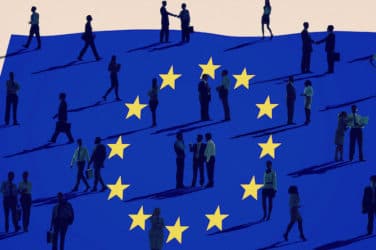
A pan-European multilateral trading facility start-up is to launch a new “liquidity-on-demand” share trading platform that will allow participants the option to pick and choose counterparties based on trading behavior.
It is in response to buy-side institutions growing ever more wary of high-frequency traders disrupting their ability to trade large blocks of shares.
The move by Quote MTF effectively invites other subscribers to build a book and offers liquidity seekers opportunities for increased discovery and price/size improvements whilst minimizing information leakage, according to the Budapest-based platform that launched in April 2011.
Advances in computing capacity and financial software have fueled this rise in high-frequency and algorithmic trading in recent years. High-frequency trading firms often make many millions of trades every day and often enter and exit trades in a thousandth of a second and account for as much as a third of all daily trading volume on European exchanges. Traditional buy-side investors such as pension funds and asset managers say the rise of high-frequency trading poses big challenges to those who are less reliant on speed with the market tending to move against these large orders.
Quote MTF’s new hybrid book, to be called QLX, is set to launch in June and will offer a 20 millisecond auction, giving no indication of price, side or size. It is part of a growing trend among venue operators of offering new ways of sourcing dark liquidity.
“The liquidity seeker is initiating a 20-millisecond auction which levels the playing field on latency, generates liquidity-on-demand, and because firms are reacting to only genuine order flow, QLX reduces messaging and load on technology,” said Tamas Madlena, chief executive of Quote MTF. “Importantly, because no information is leaked to market, there is minimal market impact.”
Madlena says the system provides subscribers with post-trade information where each trading participant is assigned a unique identifier. Using this identifier, subscribers can, over time, assess the value of trading with certain counterparties and can choose to discontinue trading with anyone where they find the execution quality deficient.
Quote MTF is the third largest multilateral trading facility in Europe with a market share of 0.12% in March, according to data from Thomson Reuters. It lags behind Bats Chi-X Europe and Turquoise.
Meanwhile, another pan-European multilateral trading facility run by CA Cheuvreux, the equity brokerage arm of Crédit Agricole, was launched last week looking to tap into the institutional market by blocking high-frequency traders from the venue.
Blink MTF, regulated by the UK Financial Services Authority, has begun trading in 1,700 stocks across 14 European markets.
It has barred proprietary desks and high-frequency traders, who are increasingly dominating the European market, from using the venue.
Ian Peacock, global head of execution services at CA Cheuvreux, said it has registered Blink, its broker-crossing network, as a multilateral trading facility to give clients and the market “maximum transparency”.
“Our proposition is very different to those of other MTFs due to the absence of proprietary and high frequency flows,” he said.
Blink has no pre-trade visibility, with all executions reported anonymously to trade reporting platform Markit Boat in real-time.





